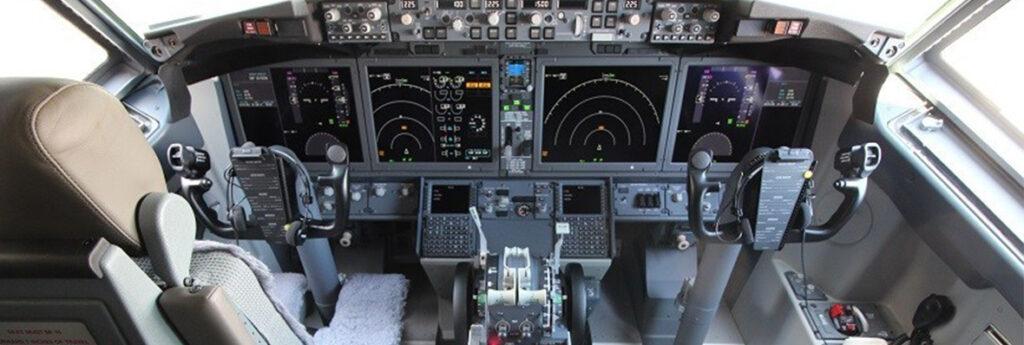Federal officials assessing training programs have concluded major changes are needed to address the ever increasing problem. In fact, this is not just a Canadian issue. The US aviation industry is also dealing with a shortage of pilots and other workers, outdated technology, and strain on the Federal Aviation Administration (FAA), which manages the nation’s airspace.
Meanwhile, industry experts claim Canada’s surge of low-cost airlines is exacerbating an already existing pilot shortage that could become an even bigger problem for this country’s aviation industry in the years to come.
Start-up discount airlines, such as Edmonton-based Flair Airlines, Calgary-based Lynx, and WestJet subsidiary Swoop, have been rapidly expanding across Canada since the COVID-19 pandemic, gambling that there’s enough pent-up demand from budget-conscious travellers to support additional capacity. But experts say the rapid proliferation of new flights and routes is putting pressure on the aviation labour market – including for pilots. Toronto-based Porter Airlines is also launching new routes and says it has up to 100 new aircraft on order which will give it the ability to operate across Canada, the US, Mexico, and the Caribbean.
Last fall the union for Sunwing Airlines pilots urged the Canadian government to stop a plan by the carrier to hire foreign pilots this winter to help cope with an expected holiday travel surge.
Unions, both in Canada and the US, wanted airline to hire pilots from their own home countries despite complaints of shortages.
Last week, Sunwing blamed its spate of holiday season flight disruptions and cancellations, in part, on a pilot shortage, telling the federal transport committee that the government’s decision to deny the airline’s recent application to hire 63 temporary foreign workers (TFW) for pilot roles impacted its ability to deliver service.
It’s not cheap and it doesn’t happen overnight
“If I have a new airline that starts up with 10 airplanes, I theoretically need about 200 pilots,” said Mike Doiron, president of Moncton, N.B.-based Doiron Aviation Consulting. “And getting new pilots trained doesn’t happen overnight, even though the demand for pilots has skyrocketed.”
A pilot shortage has been brewing in Canada for years, based on a variety of factors including an aging workforce, pandemic-related layoffs and early retirements, and spiraling training costs. (Becoming a commercial pilot can now cost upwards of $100,000, discouraging some young people from entering the profession, experts say).
A 2018 report by the Canadian Council for Aviation and Aerospace said that a third of flight operators in this country at that time, cited pilots as their biggest skills shortage. The report said the need for experienced pilots is beginning to outpace the available national supply and projected the industry will need an additional 7,300 pilots by 2025.
“There’s only maybe 15,000 to 20,000 pilots in the entire system right now, so that’s a pretty significant number,” Doiron said.
Can lower standards ever be a good idea?
He added that some small airlines are already lowering their hiring standards – reducing the amount of flying hours they would normally require a pilot to have, or considering applicants who don’t have university degrees – in order to be competitive in the labour market.
While pilots will always have to meet the minimum training requirements set by Transport Canada, a worsening pilot shortage in future will mean less experience in the cockpit. In addition, Dorian said, it could lead to a long-term increase in the number of flight disruptions and cancellations travellers experience as airlines struggle with scheduling and labour.
In Canada, aviation experts warn of an ever-growing labour shortage that threatens to disrupt the country’s airline industry, including an 80% decline in the number of commercial pilot licences issued since 2019. (Transport Canada numbers show that the number of commercial pilot licences awarded each year was relatively consistent for much of the past decade, averaging 1,116 licences annually between the years 2012 and 2019; however, with the arrival of the COVID-19 pandemic in 2020, those numbers fell off a cliff – to 474 licences that year and then declined even further to 293 in 2021 and 238 in 2022).
Temporary foreign workers
Senior airline sources told Travel Industry Today that despite the shortage of pilots to handle the increased winter flying, “the MOT haven’t allowed us to bring in foreign pilots on a temporary basis.”
That decision, said our highly placed source, has created a shortage of pilots which in turn has caused:
(a) reduced duty time for the pilots
(b) lack of simulator time to keep the pilots‘ Checks updated after the pandemic
(c) pilots who reach retirement age under USA regulations (65) not being allowed to fly over the USA.
The crisis has the industry scrambling for solutions and at least one lawmaker was reportedly considering legislation that could raise the federally-mandated retirement age for airline pilots from 65 to 67 or higher to extend aviators’ time in the skies.
The use of pilots as temporary foreign workers is rare compared with other sectors. Government data for the first half of 2022, indicates Canadian employers were granted permission to fill 32 pilot positions with temporary foreign workers. By comparison, 48,485 temporary farm worker permits were issued over the same period.
Changes are needed
Our source believes that at least part of the blame for the mishandling of the Transport portfolio can be laid at the lack of experience of Transportation Minister Omar Alghabra, and they asked why, at this time of crisis in Canadian aviation, he was representing Canada at FIFA in Qatar? Surely that should have come under the aegis of the Minister of Sports, Pascale St-Onge?
Without question major changes are needed to address Canada’s pilot shortage.
Some officials are suggesting a strategy by which governments and airlines partner to pay for pilot training – a process being used by other countries as a way to address a growing need for pilots:
The funds — either dedicated financing or government-industry training programs — would ensure “that a sufficient supply of trained pilots can sustain the current and projected demand,” reads the briefing note The Canadian Press obtained through the Access to Information Act.
The cost of training would be fully or partially covered, and pilots would typically owe airlines a certain number of years of service in return.
John McKenna, president and CEO of the Air Transport Association of Canada, said his group has asked the government to guarantee private loans from banks to qualified students or forgive interest payments.
The association estimates the annual cost to government at $5 million, based on 10 percent of students failing to finish training.
“For $5 million, the government could help train 600 people a year. We add 600 people a year, every year, and we’re going to largely solve the shortage in Canada,” McKenna said.
As the demand for air travel increases, Industry estimates say Canada will need 7,300 new commercial pilots by 2025, but will fall 3,000 short of that mark.
That number however, doesn’t take into account new rules around rest periods for pilots, which kick-in one year from now, that the House of Commons transport committee suggested last June would increase the number of pilots needed in Canada.
Worldwide, estimates are that the global demand for new pilots will hit 255,000 by 2027, with the majority yet to start the long process of training and logging flying hours.
Officials ruled out several existing programs that could help:
• programs to support apprenticeships wouldn’t work because pilots aren’t considered a designated trade;
• the Canada Student Loans program would need changes to maximum payments to come close to the cost of pilot training;
• youth employment programs don’t recognize aspiring pilots as students, meaning terms and conditions of funding would be required to offer wage subsidies.
One program, known as the Indigenous Skills and Employment Training Strategy, could help train “a small number of pilots in remote and northern communities,” the briefing notes says, but it “would not be on a scale to respond to the overall shortage.”
The customers are paying the price
In the US, United Airlines CEO, Scott Kirby, says that other airlines won’t be able to handle all the flights they plan to operate this year, leading to more disruptions for travellers. Kirby said airlines that operate as if 2023 is still 2019, before the pandemic, are bound to struggle.
He said the US aviation industry is dealing with a shortage of pilots and other workers, outdated technology, and strain on the Federal Aviation Administration, which manages the nation’s airspace.
As for the massive cancellations and delays this winter, Kirby said, “What happened over the holidays wasn’t a one-time event caused by the weather, and it wasn’t just at one airline,” he said.
While Southwest led the pack in flight disruptions and cancellations, Alaska, Spirit and Frontier also had double-digit percentages of cancelled flights in late December.
“The system simply can’t handle the volume today, much less the anticipated growth,” Kirby observed. “There are a number of airlines who cannot fly their schedules. The customers are paying the price.”

